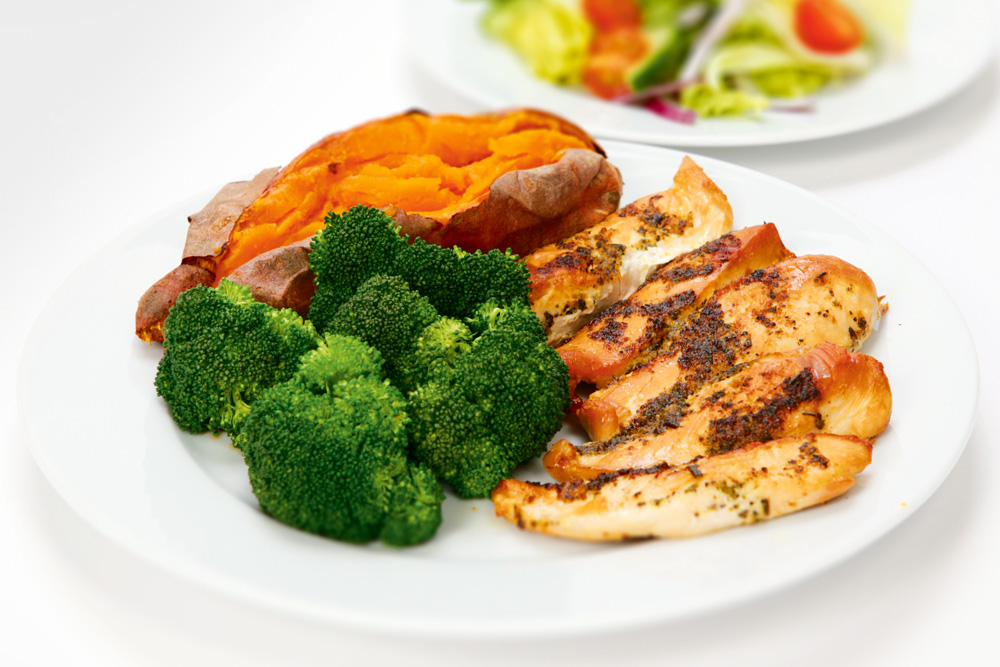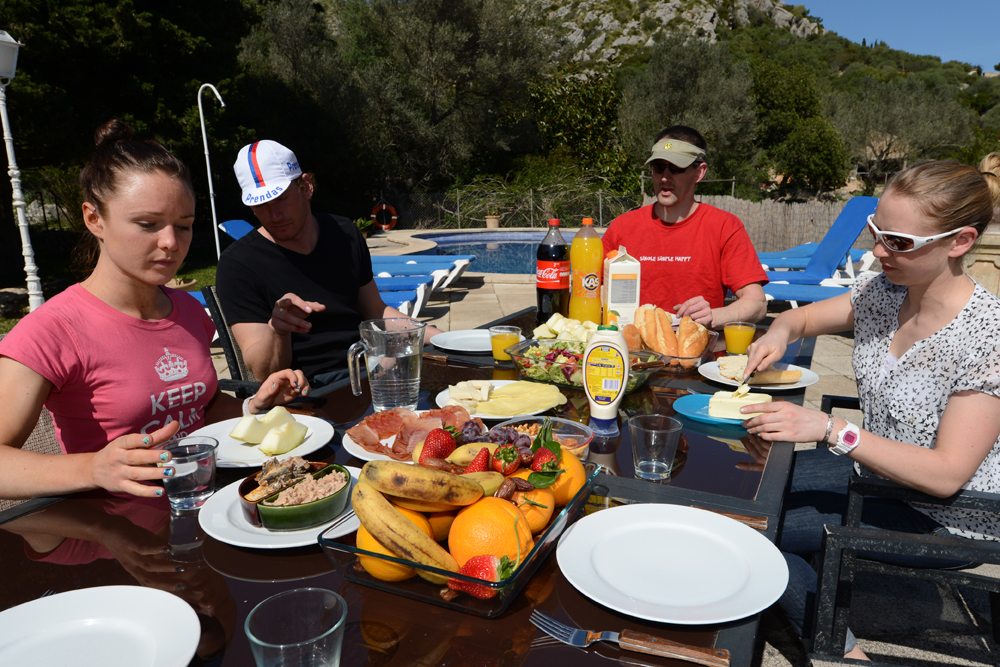Refuel with real food after cycling
Sometimes there’s no substitute for real food to repair and replenish after a long ride

A protein shake is the pinnacle of post-exercise sports nutrition convenience, but wouldn’t it be nice to know what you could eat from your kitchen cupboards to restock your body’s energy supplies? Kinetica brand ambassador Matt Lovell (www.kineticasports.com) explains.
“I’m a firm believer in the phrase ‘food first’,” says Lovell. “When we train, we break things down, deplete energy, dehydrate and cause damage to the body. To use food for recovery, we need proteins to repair, carbohydrates to replenish, vegetables to protect and fluids to rehydrate — a mixed meal.”
>>> Recover right: The three Rs of recovery
But in what quantities do we consume these? Lovell says: “Your recovery meal should include 0.4g of protein per kilo of bodyweight. So if you weigh 75kg you’d need 30g of protein, which is around one chicken breast’s worth.” On the subject of carb-replenishment and its relation to protein, Lovell reckons: “You can add carbs from starches like rice or potatoes. I normally like to use a 1:1 ratio for general recovery, but you can increase this to 2:1 carbs to protein if you’ve done much more work.”
Essential points
- Repair the body with protein
- Replenish energy with carbs
- Go high-GI for regular training
- Get your carb:protein ratio spot-on
If you want to help bulletproof your body, make sure vegetables are in the mix. “Add some special protective nutrients from vegetables like broccoli to round the meal off, and you can add herbs to cook the chicken,” Lovell adds.
>>> When’s the best time to train? Let your body clock decide
The latest race content, interviews, features, reviews and expert buying guides, direct to your inbox!
And if you need to recover quickly, to train the same day, first thing the next morning, or if you’re training hard most of the week? Lovell recommends: “Liquid recovery and faster digesting proteins and carbs are preferable. Higher glycaemic index (GI) carbs [sugary carbs and starches] are also great for raising insulin, which can act to shuttle carbs back quicker into the muscles. Examples of high GI carbs include white rice, pasta, bread, custard and potatoes.
“[Insulin] will also stop muscle protein breakdown while its levels are high in the bloodstream.”
>>> How to improve your VO2 max
There is still a place for protein supplements, if you’ve no other good meals, or if you’ve a long journey home from an event. They’re quickly absorbed and speed recovery. Yet Lovell’s parting shot: “Mostly, real food will offer a better recovery solution, as long as you choose carefully and get your ratios right.”

Key facts
Don’t overlook the importance of vegetables in your quest for recovery. Although protein is essential to repair damaged muscle fibres, so are nutrients from green veg such as broccoli, as they have anti-inflammatory properties. The same can be said of oily fish, such as sardines.
Recent studies have proposed that drinking milk is a good, quick way to kickstart your recovery, due to its high protein content. So heading for the fridge when you get home can be a good thing.
>>> Can crash diets work for cyclists?
The ideal ratio of carbs to protein is 1:1, but this can be upped to 2:1 if you’re riding hard on most days of the week. For a 100kg adult, you’ll achieve the perfect 1:1 ratio with one and a half chicken breasts and a large, baked sweet potato (put the chicken in a sandwich if you need to adjust the ratio for more carbs!)
If you’re a regular rider, and especially if you’re putting in hard sessions every day, perhaps in preparation for a big event or race, you’ll benefit from higher-GI carb sources, such as white rice, bread and pasta. These are broken down quicker by the body and rapidly raise your blood glucose levels.
Words by Marc Abbott.
This article was originally printed in the March 12, 2015 issue of Cycling Weekly
Founded in 1891, Cycling Weekly and its team of expert journalists brings cyclists in-depth reviews, extensive coverage of both professional and domestic racing, as well as fitness advice and 'brew a cuppa and put your feet up' features. Cycling Weekly serves its audience across a range of platforms, from good old-fashioned print to online journalism, and video.